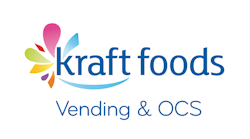Kraft Foods Outlines Growth Plans for North American Grocery Business Including Marketing Campaigns For Major Brands
The future leadership team of Kraft Foods Inc.'s North American grocery business presented its growth plans and financial outlook at a meeting of analysts and investors recently in Boston, Mass.. The business, which will become an independent public company in October, expects to deliver steady and profitable top-line growth, consistent bottom-line growth and a superior dividend payout.
As previously announced, Kraft Foods Inc. plans to spin-off Kraft Foods Group, Inc., which will hold Kraft Foods' North American grocery business, at 5 p.m. EDT on Oct. 1, 2012. Kraft Foods Group will trade on the NASDAQ stock exchange under the ticker symbol "KRFT." Following the spin-off, Kraft Foods Inc. will be renamed Mondelez International, Inc. Mondelez International will trade on the NASDAQ stock exchange under the ticker symbol "MDLZ."
"Today, I have the honor to introduce a new Kraft, one with the spirit of a startup and the soul of a powerhouse," said Tony Vernon, president of Kraft Foods North America and future Chief Executive Officer of Kraft Foods Group, in a prepared statement. "Our aim is to be North America's best food and beverage company, and we'll get there by continuing to offer products consumers love, creating a performance-based culture that motivates and excites employees and becoming the best investment in the industry."
"Tony and his team have a clear mission and are ready to deliver," said John Cahill, future executive chairman of Kraft Foods Group. "I'm confident we have the right plans and people in place to unlock the value of the North American grocery business after its spin-off."
Unleashing the Power of an Unparalleled Portfolio
Kraft Foods Group offers a diverse, unrivaled portfolio of admired brands with products in the beverages, cheese, convenient meals and grocery categories. Led by iconic brands like Kraft, Oscar Mayer and Maxwell House, Kraft Foods Group will be North America's fourth largest consumer packaged food and beverage company out of the gate, with revenues of approximately $19 billion in 2011. Ten of the company's brands achieved sales of $500 million or more in 2011, while an additional 17 brands posted sales of $100 million or more in 2011. Approximately 80 percent of Kraft Foods Group's revenue comes from categories in which the company holds the No. 1 or No. 2 market position.
Growth Plans
Kraft Foods Group's future growth will be driven by a four-part strategic plan: making its people its competitive edge, executing with excellence, "turbocharging" its iconic brands and redefining efficiency.
To make its people its competitive edge, Kraft Foods Group plans to create a more nimble, less-layered organization and unleash the skills and creativity of its people by breaking down walls -- literally and figuratively -- at the company. Incentive plans will be redesigned to incorporate stock ownership more broadly to reinforce the alignment between employee and shareholder interests. Stepped-up investment in talent acquisition and a newly created "Kraft University" will help create the next generation of Kraft leaders.
Second, Kraft Foods Group will execute with excellence by strategically allocating resources to best leverage the breadth of the company's portfolio, sales and warehouse distribution system. In April 2012, Kraft Foods Group's highly regarded sales organization teamed up with Acosta, a leading sales agency, which has helped expand in-store merchandising coverage by 30 percent and grow the company's presence on store shelves with a 5 percent increase in total distribution points. The sales organization has also realigned its incentives to focus on net revenue growth and profit dollars.
The third step in the company's plan is to "turbocharge" its iconic brands so they can grow faster than the market and key competitors. This means delivering the right products at the right price points, introducing "big bet" innovations like MiO, which created an entirely new product category of liquid beverage enhancers, addressing health & wellness needs through the reformulation of existing products and introduction of new products, and investing in world-class marketing. Increased advertising in brands like Velveeta, Philadelphia, Kraft Mayo and Capri Sun has already resulted in significant sales increases.
Lastly, Kraft Foods Group will redefine efficiency to free up cash, in order to make these important investments in people, innovation and marketing. The company will employ several tools such as Lean Six Sigma, supply chain simplification and strategic sourcing, with the goal of becoming the lowest cost producer in its categories. Success will be measured through external benchmarking to reinforce a results-driven culture.
Long-term Outlook
Kraft Foods Group expects to be well-positioned over the long term to deliver steady, reliable growth with a strong focus on cash flow to fund a highly competitive dividend and reinvestment in people, innovation and brand-building. The company will consistently aim to accomplish:
- Organic revenue growth1 at or above the North American food and beverage market rate of growth;
- Mid-single digit Operating Income growth;
- Mid-to-high single digit EPS growth;
- Mid-single digit dividend growth; and
- Free Cash Flow1 of at least 85% of Net Income.
"Cash will be king at Kraft," said Tim McLevish, Chief Financial Officer of Kraft Foods Group. "What matters to shareholders is total return and dollars in their pockets. And cash will be the fuel to grow our business."
2013 Outlook
Kraft Foods Group will launch from a position of strength, having delivered four consecutive quarters of top- and bottom-line growth. In 2013, the company expects to continue that momentum with organic revenue growth in line with market growth, despite a negative impact of 1 point due to product pruning.
Productivity improvements and overhead savings are expected to drive 2013 EPS of approximately $2.60 on a GAAP basis. This outlook assumes interest expense of approximately $520 million and an effective tax rate of 35 percent. The results for the year also include restructuring costs of about $240 million (or 26 cents per share), compared to expected ongoing costs of about $125 million (or 14 cents per share) in a typical year. Free cash flow is expected to be about 70 percent of GAAP net income – below the long-term target of at least 85 percent due to an extra tax payment in 2013 of approximately $200 million.
The management team expects to recommend to the Board an annual dividend of $2.00 per share.
1 Please see discussion of Non-GAAP financial measures at the end of this press release.





